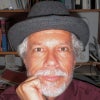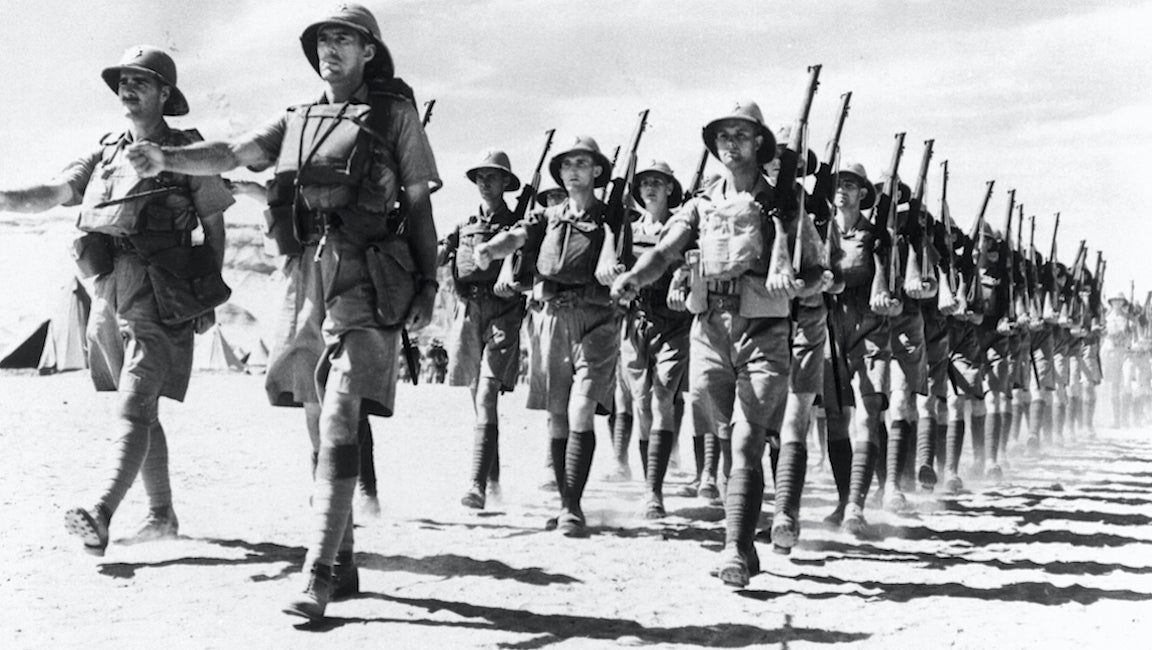Are the dog days of August hot enough for you?
If not, you might have enjoyed being part of an 8-decade-old study in which, one August, an exercise physiologist named marched a squad of young men around the desert north of Yuma, Arizona, where temperatures can easily hit 115°, extending their treks until one-by-one they packed it in and refused to go any further.��
Then, after they’d rested overnight, he prodded his troops out the door and had them do it all again.
Background
It was 1942, and Adolph, a professor at the University of Rochester, New York, had been retained by the U.S. military to find out just exactly what soldiers can and cannot do in the desert — vital information for the Army, which was then engaged in the Africa campaign against Hitler’s crack Afrika Korps under the command of the “Desert Fox,” Erwin Rommel.
In the process, Adolph was to revolutionize our understanding of how humans respond to heat, making ground-breaking insights now taken for granted by every runner on the planet.
During the war, his work was a military secret. Afterward, he published it in an encyclopedic 357-page book, (1947) that is still widely cited.
Adolph was by no means the first to be fascinated by how the human body copes with extreme conditions. The lost prospector, croaking “water, water” as he staggers toward a shimmering mirage is a staple of the public imagination, even finding its way into uncountable editorial cartoons.��
Prior to Adolph, however, the focus was on survival. “They never looked at performance,” says South African exercise physiologist Tim Noakes, author of (1986).
Not that there aren’t plenty of harrowing tales. In his own book (2012), Noakes recounts the plight of a cavalry troop that ventured too far into the “Staked Plains” of west-central Texas. After 3 1/2 days without water, they were delirious and tottering — drinking horse blood and their own urine. The fact they lived to tell the tale was a testament not only to their drive and determination, but to the human body’s resilience. “In the end all but four of the troopers survived,” Noakes wrote, “confirming the ability of humans to survive profound levels of dehydration.”

Revolutionary Finding
But that wasn’t what Adolph was interested in. Soldiers so dehydrated they were drinking their own urine were going to be no match for Rommel. Adolph wanted to know how far they could go in a day, how long it took to recover, and how best to do it.
One of the first things he found was that at levels normally encountered during exercise doesn’t turn people into urine-drinking vampires. It just makes them cranky, tired, and eventually unwilling to continue.��
“Only desire, to stop and rest,” he wrote of one man, after 13.4 waterless kilometers in 104° heat. (Me, I’m surprised he got that far. That was one tough dude.) “Unsociable attitude,” he wrote of another, who managed 29.8 kilometers at 93°. “Began to lag and finally stopped.”
His most important finding seems simple today, though at the time it was a shocker: his troops could march farther if allowed to drink.
Today, we’d snort and say “duh.” At the time, though, the prevailing wisdom was exactly the opposite.��
Back in 1909, James E. Sullivan, one of the founders of the U.S. Amateur Athletic Association, wrote what may have been the first-ever book about marathon running. He offered this advice: “Don’t get into the habit of drinking and eating in a marathon race; some prominent runners do, but it is not beneficial.”
Thirty-three years later, .��
Then Adolph put it to the test. He divided his volunteers into two groups. Both went on treks of up to 8 hours under the blazing August sun. One group was allowed to drink as much as they wanted. The other wasn’t permitted a single sip.��
The results shattered Sullivan’s myth. Both groups gave out at dehydration levels of 7 to 10 percent, but those who were allowed to drink got farther before they quit. It was the start of a paradigm shift, and Adolph was the one who ushered it in.
While the Army appears to have quickly accepted it, not so for coaches and PE teachers. Growing up in the mid-to-late 1960s, I was taught that taking in water during exercise was for wimps. Not only that, it was considered fatally dangerous. If you drank within an hour of exercise, I was firmly instructed, it could trigger a heart attack — an utter absurdity for a fit (but thirsty) 12-year-old.��
Even on the international athletics scene, Sullivan’s advice long held sway. Marathon runners were still advised to shun water, and until 1977, participants in international marathons were banned from taking any until after the 11-kilometer mark. After that, they were only allowed to drink once every 5 kilometers.
Other Discoveries in Sports Science

The folly of this wasn’t the only thing Adolph discovered. Salt tablets (today, we would call them electrolytes) helped stave off dehydration, also allowing his volunteers to go further.��
In addition, he discovered that once his marchers stopped and were given food and water, they recovered fully and quickly, generally within 8-12 hours. No need for IVs or emergency medical treatment. “Able to walk almost immediately after taking water,” he jotted about one of them. “Exhaustion relieved by water,” he noted of another.
Adolph also found that even with ample water, his volunteers tended not to drink as much as they sweated off. It was as though their bodies chose to dehydrate, and it wasn’t until afterward, particularly during mealtime, that they drank enough to make up the deficit.
At the time, he didn’t know what to make of this, and dismissed it as a “peculiarity of dehydration.” But Noakes thinks he stumbled onto an important quirk of human evolution.��
Humans, Noakes says, are “delayed drinkers” — possibly an adaptation to hunting, in which our early ancestors chased game for long distances through arid conditions in Africa. “The Bushmen, as they hunt, will go the whole day without water,” he says. “They only get water when they get back to their homes.”
For hunters engaged in a long chase against fleet-footed prey, that’s a good thing, because having to stop for a drink might allow the prey to escape. But it also means we aren’t built like camels, which can tank up quickly on large amounts of water. “We have a smaller gut,” Noakes says.
All of this makes us better endurance runners, but comes at a cost: we can’t drink fast enough to keep up with the rate at which we sweat. Instead, Noakes says, we postpone rehydration “until it’s convenient.”
So, if you’ve ever wondered why elite marathoners often drink very little in their races, it may be that Adolph’s 78-year-old research is still providing important clues. Perhaps his “peculiarity of dehydration” was actually an early piece of a now-growing accumulation of evidence that demonstrates that our bodies, once we learn to listen to them, can give us a lot more information about ideal racing (and training) strategies than we once believed.
If so, it’s another sign that Adolph, who most runners have probably never heard of, might be one of the unsung heroes of our sport.


